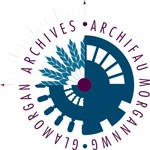Preswylfa stood in Clive Road, Canton, on the northern side of its junction with Romilly Road. It is unclear when the house was built but it was probably quite new in 1861 when the census records its occupants as Robert Rees and his family. Forty-four year old Rees, a Wesleyan Methodist Minister, was Superintendent of fourteen chapels in the Cardiff District. The house, then, would have been surrounded mainly by fields and open countryside. It has been suggested that Preswylfa was built by Lewis Davis, a Rhondda coal-owner – who does seem to have lived there in the late 1860s; this is not inconsistent with the 1861 record since Davis is known to have contributed significantly to Wesleyan funds.
By 1871, the property had been acquired by Charles Thompson, a major partner in the Docks-based Spillers milling business. Although Preswylfa passed out of the Thompson family after Charles’s death on 1 June 1889, it is pertinent to note that at least three of his sons made significant contributions to the cultural and leisure assets of Cardiff and its environs. James Pyke Thompson (1846-1897) built the Turner House gallery in Penarth, which later became an outpost of the National Museum of Wales, of which he was also an important benefactor. Charles Thompson (1852-1938) gifted the gardens now known as Thompson’s Park while Herbert Metford Thompson (1856-1939) served as a city councillor and alderman and, with his brother Charles, was instrumental in enabling the city to buy Llandaff Fields as an open space. Herbert wrote books on various subjects; ‘An Amateur’s Study of Llandaff Cathedral’ was printed for private circulation in 1924, while his history of Cardiff was published in 1930. Charles (junior) and Herbert were both created Honorary Freemen of Cardiff, while James Pyke Thompson is commemorated in the name of a gallery at the National Museum in Cathays Park.
Directories of the 1890s list the Scottish ship-owning brothers John (later Sir John) and Marcus Gunn at Preswylfa. By 1901 though, their place had been taken by John Mullins, a corn merchant, who appears still to have been there in 1908. At the 1911 census, Henry Thomas Box, a solicitor, lived at Preswylfa with his wife, two sons, and a household of four servants. Cardiff directories continue to list Box until 1915, after which Preswylfa disappears from available directories until 1924, when the occupant was Henry Woodley, founder of the South Wales butchery business which bore his name. He remained there until his death on 17 March 1950.

By 1952, Preswylfa had become a public health clinic and it continued to serve various Health Service roles until at least the 1970s. Mary Traynor drew Preswylfa in October 1996 and it was subsequently demolished. The site is now occupied by Maes yr Annedd, a development of around thirty modern houses. Since the Welsh words preswylfa and annedd both translate into English as dwelling or abode, the new name retains a tenuous link with the former house.
David Webb, Glamorgan Archives Volunteer
Sources consulted:
- Mary Traynor Collection [D1093/2/51]
- Thompson, Herbert M, An Amateur’s study of Llandaff Cathedral (Printed for private circulation, 1924)
- Thompson, Herbert M, Cardiff (1930)
- Various Cardiff and South Wales directories
- 1871 – 1911 censuses
- England & Wales National Probate Calendars 1889 and 1950
- https://www.cardiff.gov.uk (list of Honorary Freemen)
- http://www.museumwales.ac.uk/
- http://southwalesgardens.org/thompsons-park
- http://www.caithness.org/history/articles/sirjohngunn/index.htm
- Cardiff Times, 6 April 1867; 8 June 1889
- Western Mail, 18 March 1950
